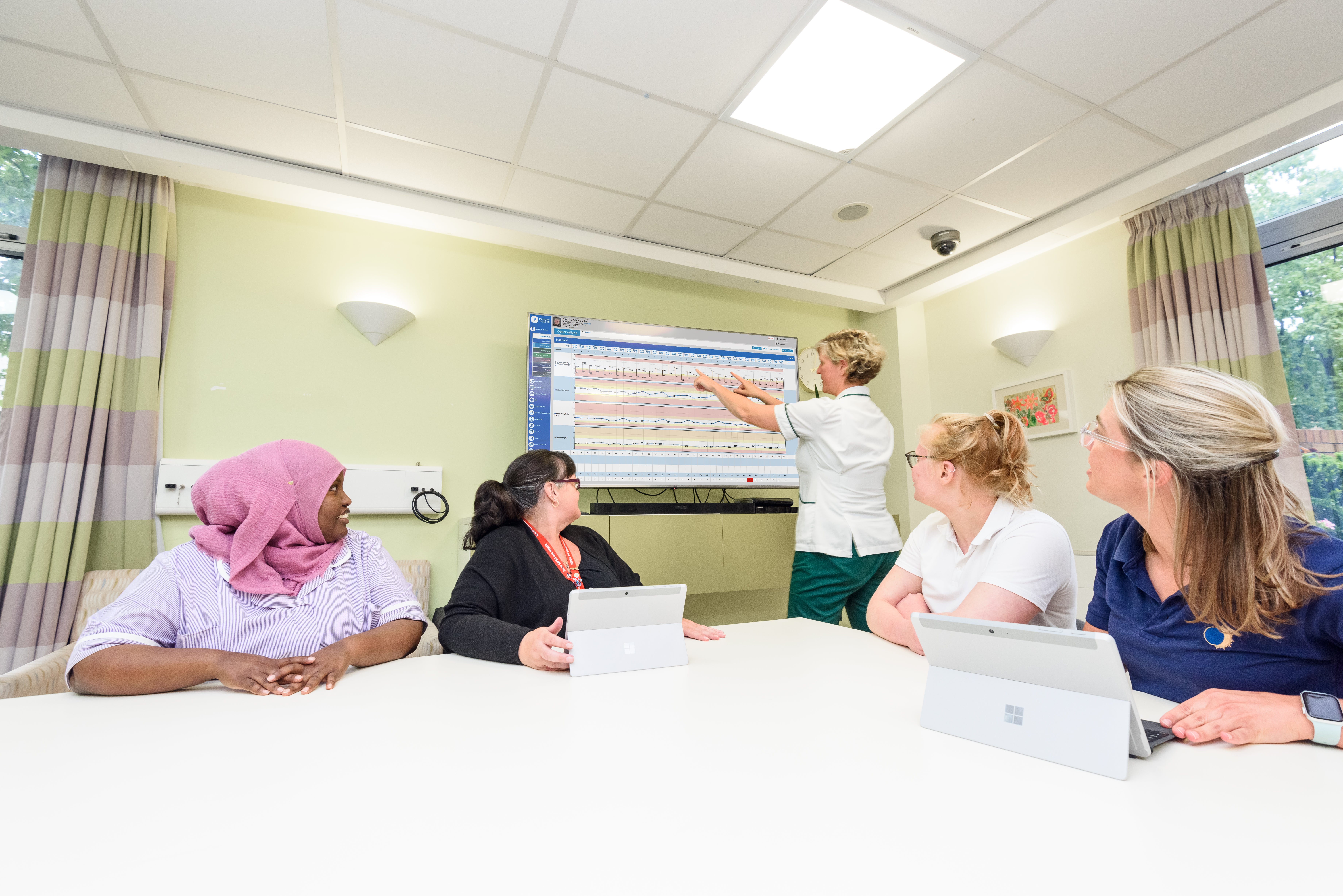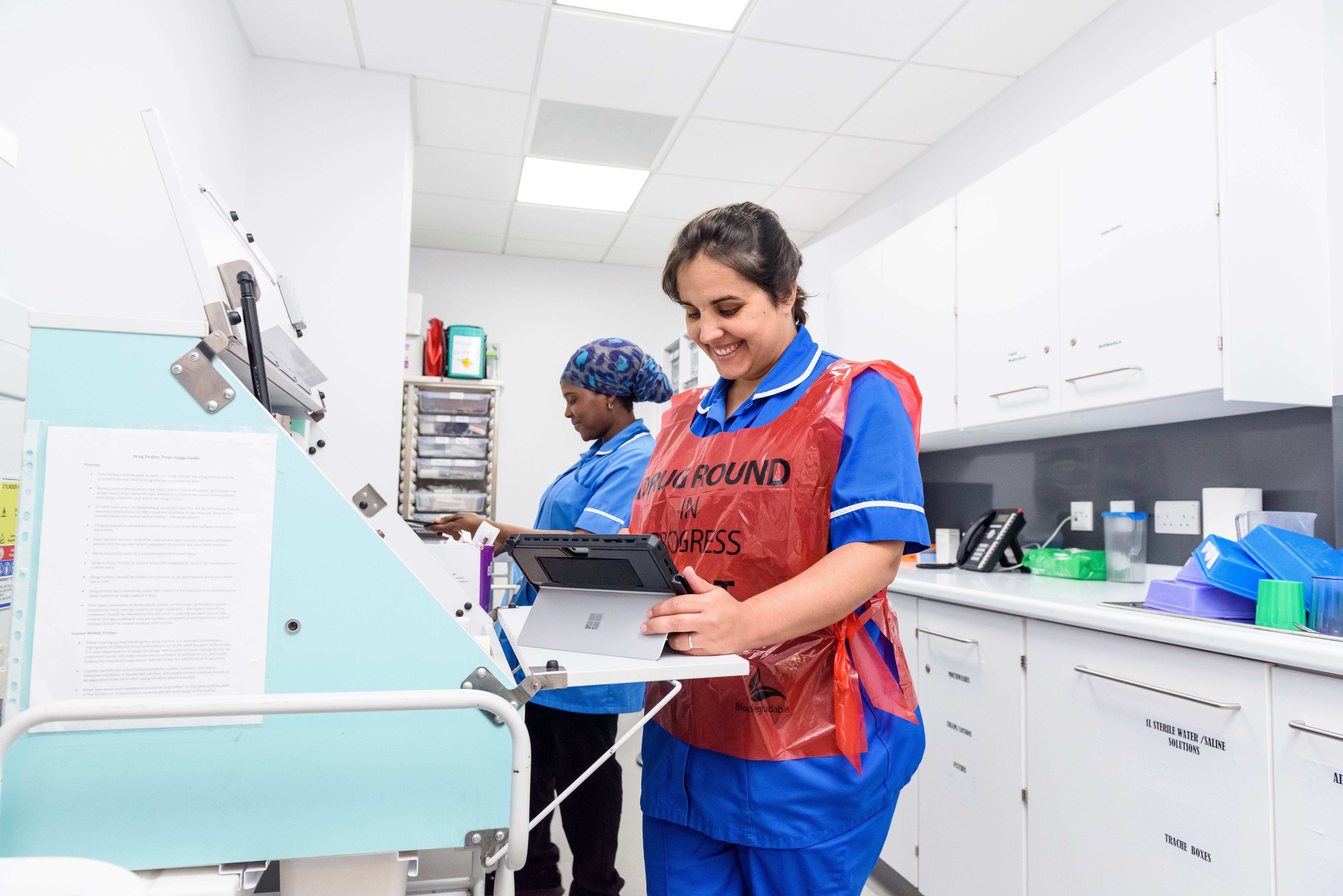Making health smarter - The clinician using his frontline experience to transform care
THE ARTICLES ON THESE PAGES ARE PRODUCED BY BUSINESS REPORTER, WHICH TAKES SOLE RESPONSIBILITY FOR THE CONTENTS

PatientSource is a Business Reporter client
An A&E doctor has designed a comprehensive electronic medical records system that will transform the health of millions
The push for a digitised NHS is gathering pace as healthcare emerges from the pandemic’s stranglehold to face a series of challenges.
The backlog of seven million waiting patients, rising demand from an ageing population, staff shortages and a continued squeeze on finances are keeping frontline services in the danger zone.
But the nation’s hard-pressed healthcare has a lifeline: the digitisation of patient records and clinical documents. Going electronic can reduce administrative burdens, support the development of new medicines and treatments, and empower patients to have more control over their health and well-being.
An agile, cloud-based electronic patient records system, developed by an NHS A&E Senior Doctor, is leading the way by dramatically improving the flow of clinical data, enhancing decision making, liberating clinical time and creating efficiencies and balance sheet savings.
The fast-growing PatientSource has the power to reduce the time a clinician spends finding and consulting notes from six minutes to six seconds. This time saving is having a transformative impact in NHS units, international hospitals and private healthcare clinics.
Under-pressure doctors, nurses and hospital executives are continually frustrated by the limitations of paper records and legacy clinical applications which cause treatment delays and extra costs.
“The aim was to produce a system that was easy to use so doctors would adopt it, and would reduce patient risk at a cost-efficient level,” said Dr Michael Brooks, who works at an East of England Hospital, and is the lead software developer for PatientSource, which he founded after seeing the harm done by poorly controlled paper records.
“Every doctor has experienced frustrating delays and inefficiencies while using paper records along with struggling to cope with a huge administrative burden and the potential risks to patients from notes that go missing, are in the wrong place or can’t be read. Medical staff and patients deserve better.
“Our system was developed to improve what is happening all over healthcare and I’m glad that it is now in place in various hospitals around the world and is having real, measurable benefits.”
PatientSource is way more than a digital replacement for paper records as it can be tailored to the specific requirements of a major hospital or smaller unit and synchronise clinical and support data at pace. The results, including smoother diagnostics, treatment and patient outcomes, radiate around hospitals and clinics.
It has already scored a number of significant successes. PatientSource was rapidly deployed in a national centre for excellence in neurological rehabilitation and reduced prescribing errors by 83 per cent within a month. PatientSource also built an entire support unit for an ophthalmology unit, including translating the solution to Hebrew, at the Ichilov Hospital in Tel Aviv, Israel.
“There are a lot of pain points in healthcare caused by clunky, cumbersome systems that are designed for collecting metrics and financial management rather than delivering healthcare to patients,” added Dr Brooks. ‘By understanding their issues and building a bespoke system, we can create an environment where a clinician can focus on the job and not have to rifle through paper notes or bounce between different IT systems. The focus is to have the right information about the right patient, at the right time and for it to be easy and accessible at the click of a button.”
“Our clients are much happier because their departments work efficiently and deliver better clinical outcomes because medical staff are fully engaged in consultations. There is more time to discuss issues with patients and link up with other services in the hospital so that precious time and vital resources are not wasted.”

Only 20 per cent of NHS hospitals are classed as digitally mature and, although 86% have some form of electronic patient records, the potential to improve services has yet to be realised across the NHS and private healthcare.
The need to accelerate digital uptake was highlighted graphically in a survey of 23,000 patients by Physicians Weekly in 2021 which found that 25 per cent of medical records contained mistakes, ten per cent of which were classed as serious. The errors included a BRCA-1 patient being labelled non-BRCA-1, a patient falsely recorded as having lung cancer and therapy referral made for the wrong body part.
“This should not be happening, particularly as the technology and sophistication of applying it in clinical settings is now available,” said Dr Brooks. “These errors can have devastating impacts on patients and also on hospitals who will be legally liable for clinical errors, as well as being a constant drain on resources and staff morale.”
PatientSource is fully operational in eight hospital and clinical groups around the world and the speed and ease of adoption means no disruption during transformation. Its deployment at the Royal Hospital for Neuro disability, in London, took a complex workflow system from paper to e-Prescribing in just three months including the training of more than 140 frontline staff.
The deep understanding of clinical and management needs underpins PatientSource’s ability to respond rapidly to requests and it has crafted a specialism within the private healthcare sector. Software Development focus has been on the billing capabilities and patient engagement functionality within the solution.
Addressing the unprecedented wait times is a priority for any medic and Dr Michael Brooks, who is in a unique position as the CEO of PatientSource, recently commissioned the setting up of a consultancy arm to support new launch private healthcare facilities.
The sooner we can add capacity to the system, the sooner wait times will come down.
Dr Brooks said: “The PatientSource team has witnessed the sheer magnitude of work and the many pitfalls experienced when setting up a new private healthcare facility. Through our consultancy arm, we can be an extension of your team and help you navigate safely”
“Hospital IT budgets are restricted so having an affordable and exceptionally intuitive to use system is important,” said Lee Francis, international sales and marketing director for PatientSource. “It means it is safer to use, particularly when an organisation might use locums or bank staff- who can become proficient and competent on the systems within an hour of first use - so your risk profile drops considerably and temporary staff become extensions of the core team incredibly quickly.”

PatientSource is also working in emerging economies as its technology can build turnkey systems in any language that can operate over satellite links and bring improvements in healthcare where facilities, resources and staff are limited and spread across huge areas. A recent partnership with field hospital specialists Weatherhaven and ruggedised tablet manufacturer Cybernet are testament to its commitment to the NGO and humanitarian aid sector.
Through its social charter, PatientSource has partnered with the International Organisation for Women and Development, a New York based charity that delivers surgical missions in Rwanda repairing fistulas suffered during childbirth. Utilising PatientSource as their EPR will empower post mission review of analytics and surgical outcomes, enabling the volunteers at IOWD to provide even greater support to the underserved women and children in low-income countries; currently all paper medical records have to be stored in Rwanda.”
“This is the most agile and interoperable cloud-based EPR solution on the market and it offers a new way of managing services and achieving the change and efficiencies they need,” added Mr Francis. “It can also be a significant boost for the challenge of clearing the NHS backlog and creating a more efficient digitally-powered healthcare system.
“This system works so well because it has been created by an active NHS doctor who has experienced the issues first hand. This is the future of healthcare and It is built by one of their own.”
To find out more about the PatientSource solution, click here.
Originally published on Business Reporter
Subscribe to Independent Premium to bookmark this article
Want to bookmark your favourite articles and stories to read or reference later? Start your Independent Premium subscription today.
